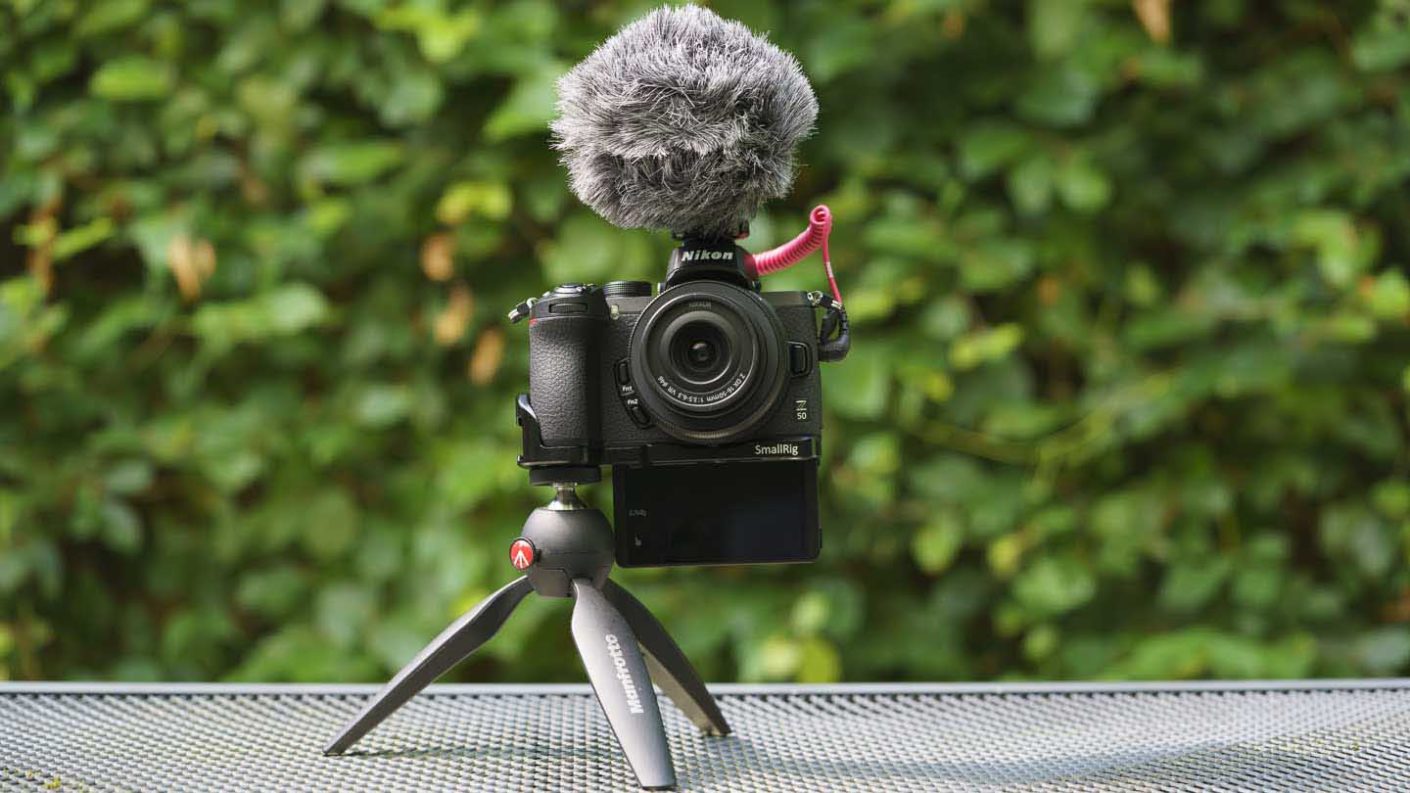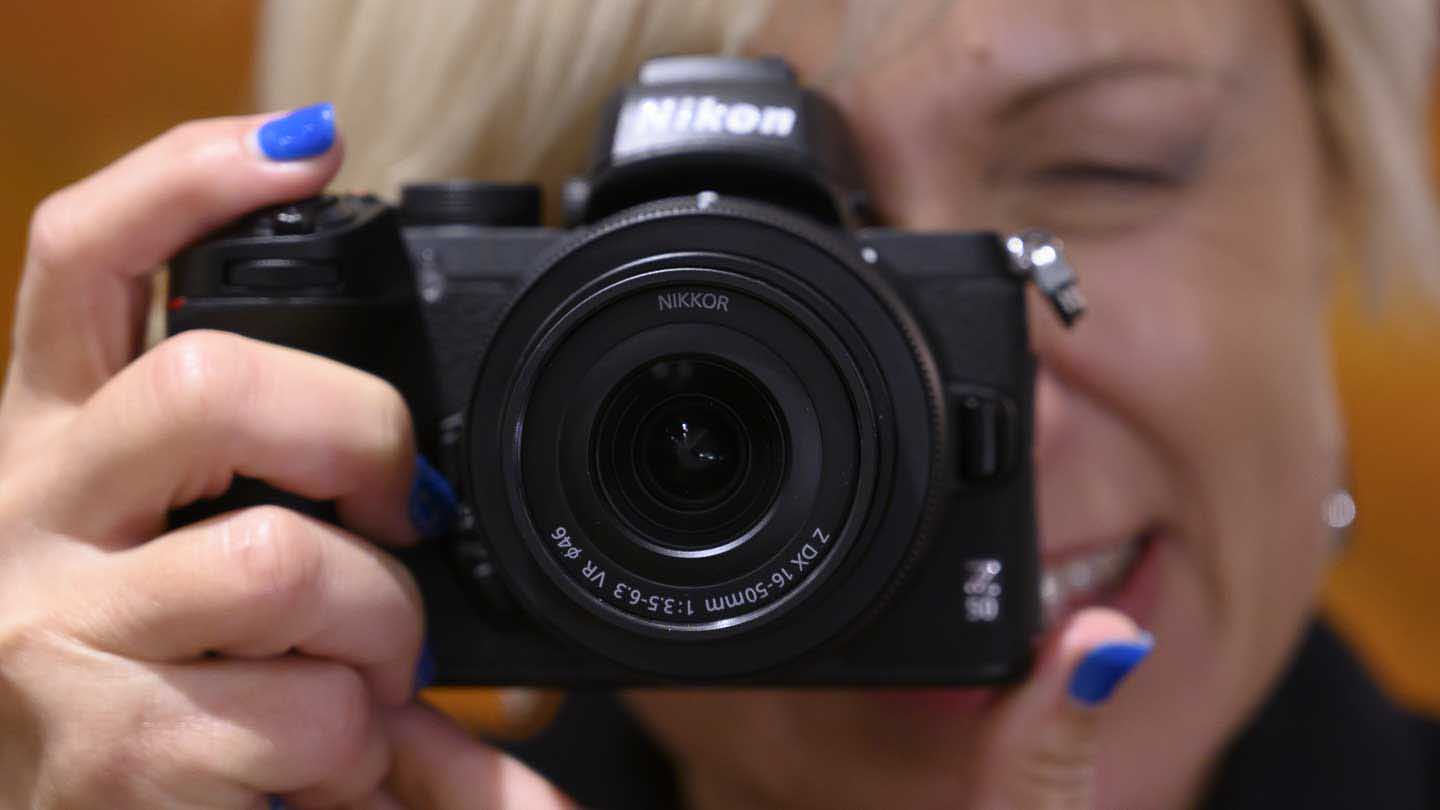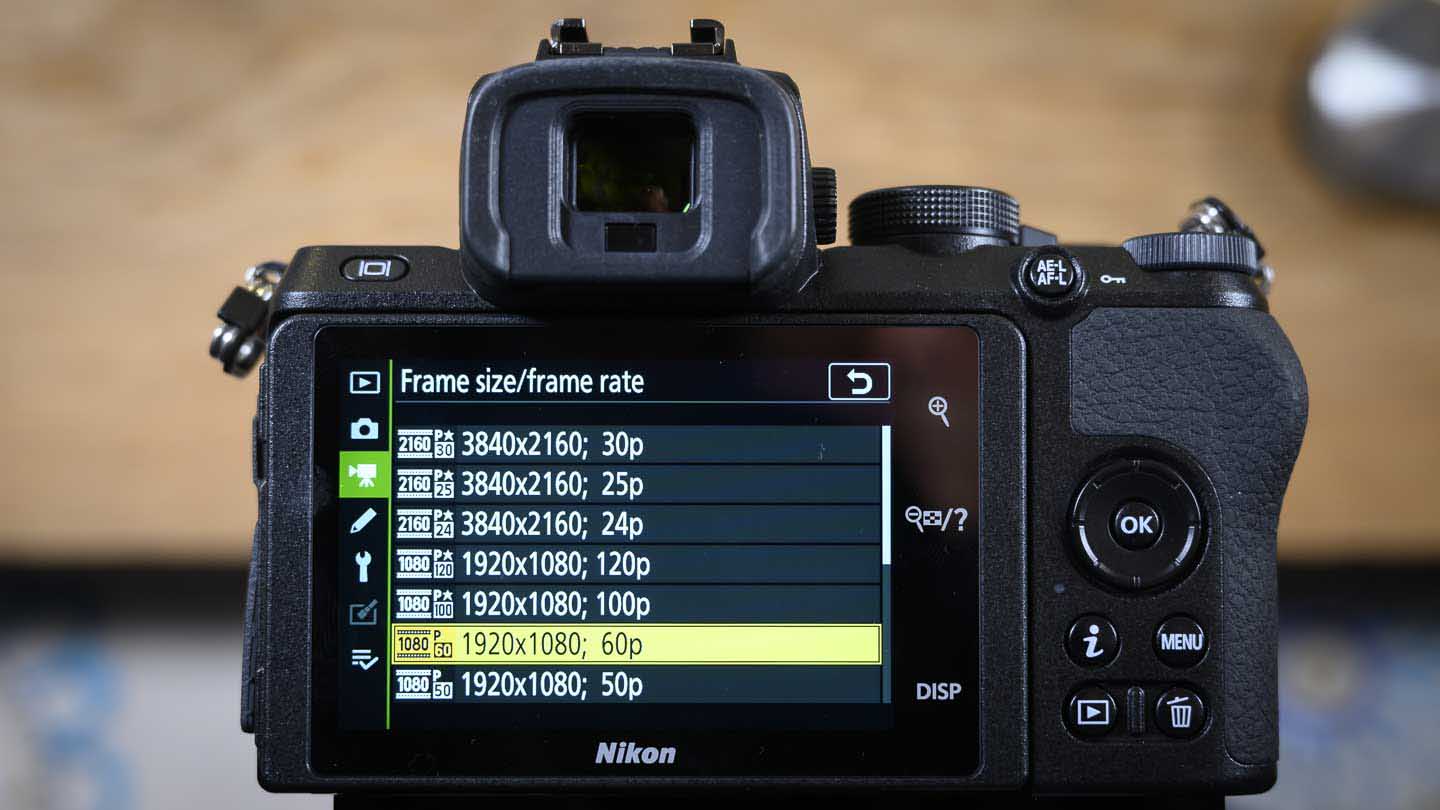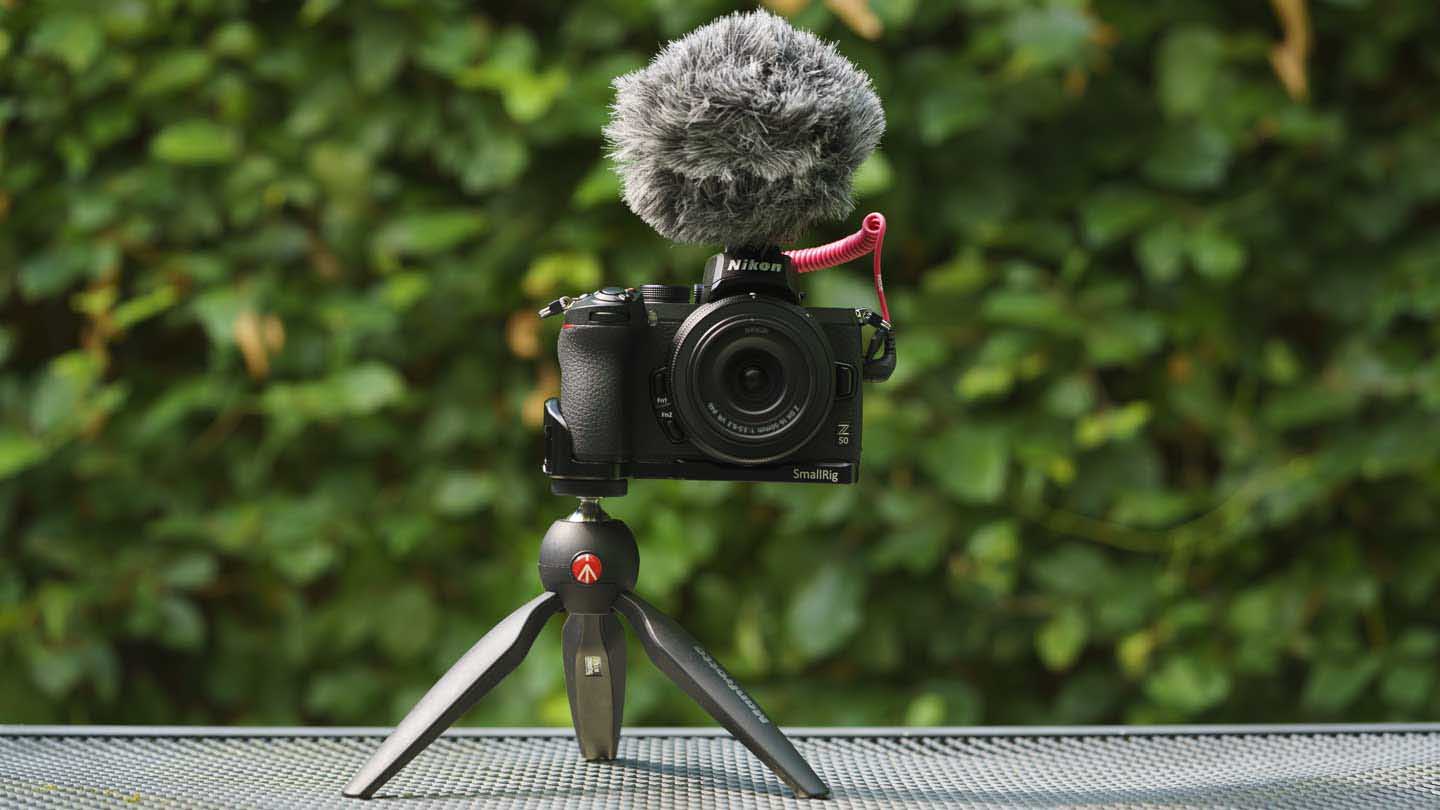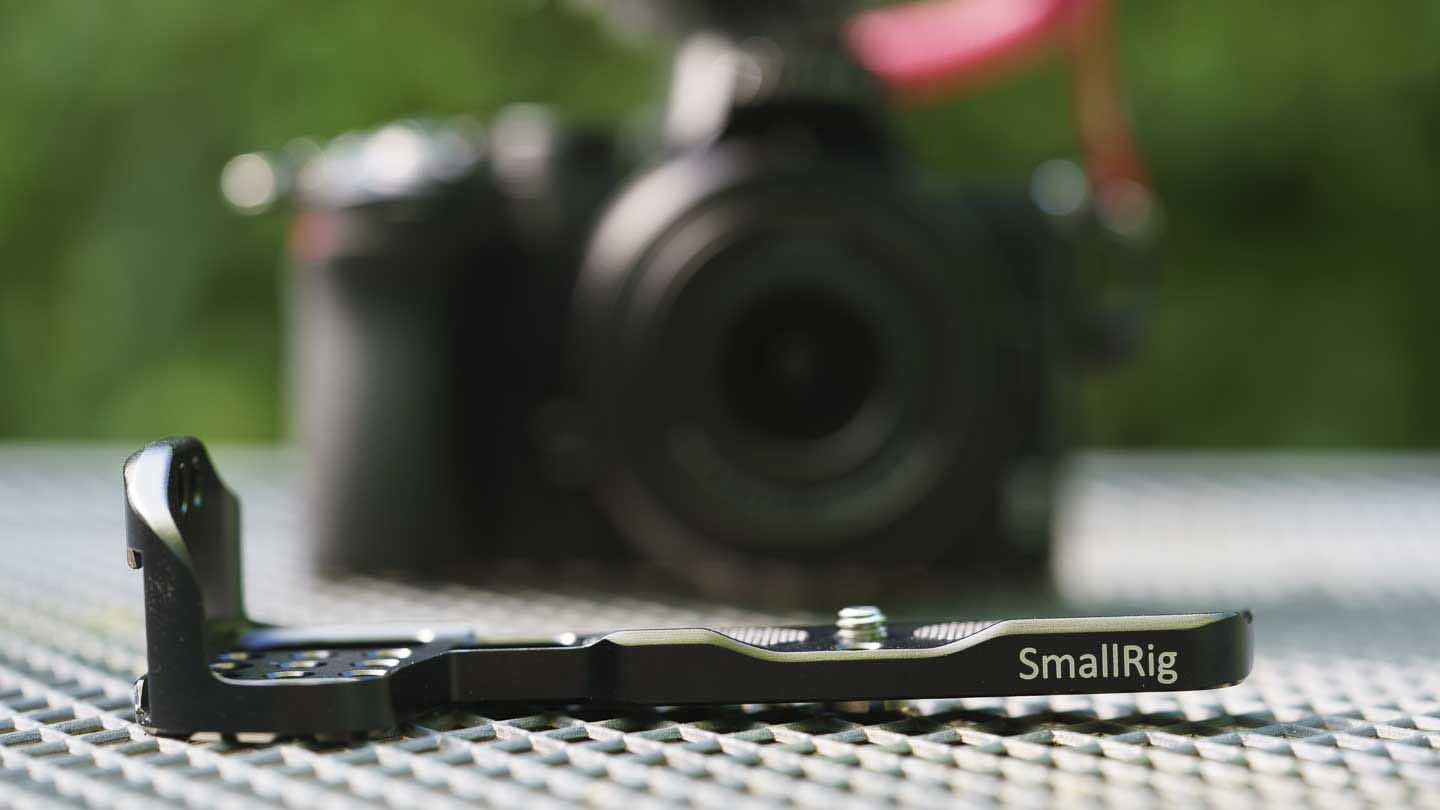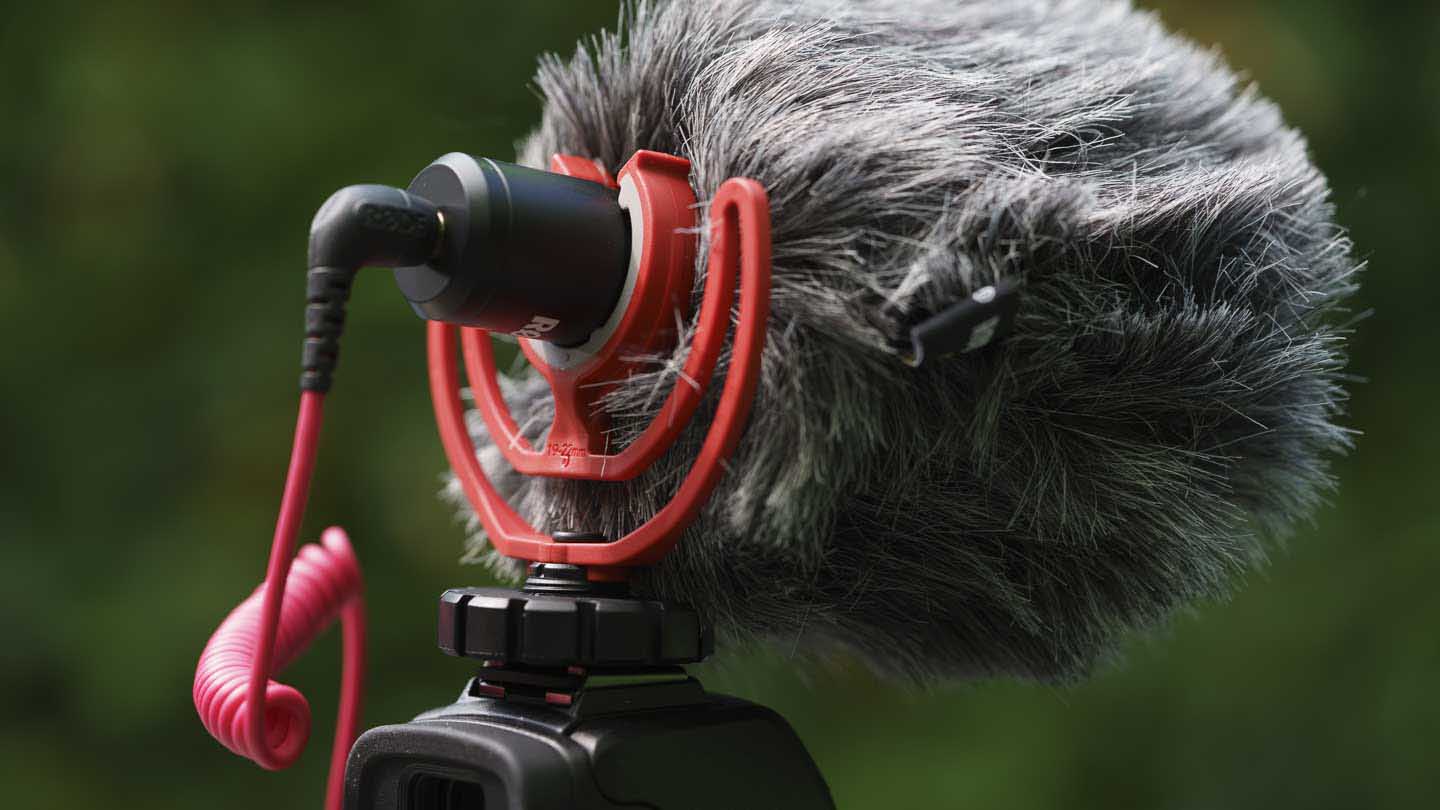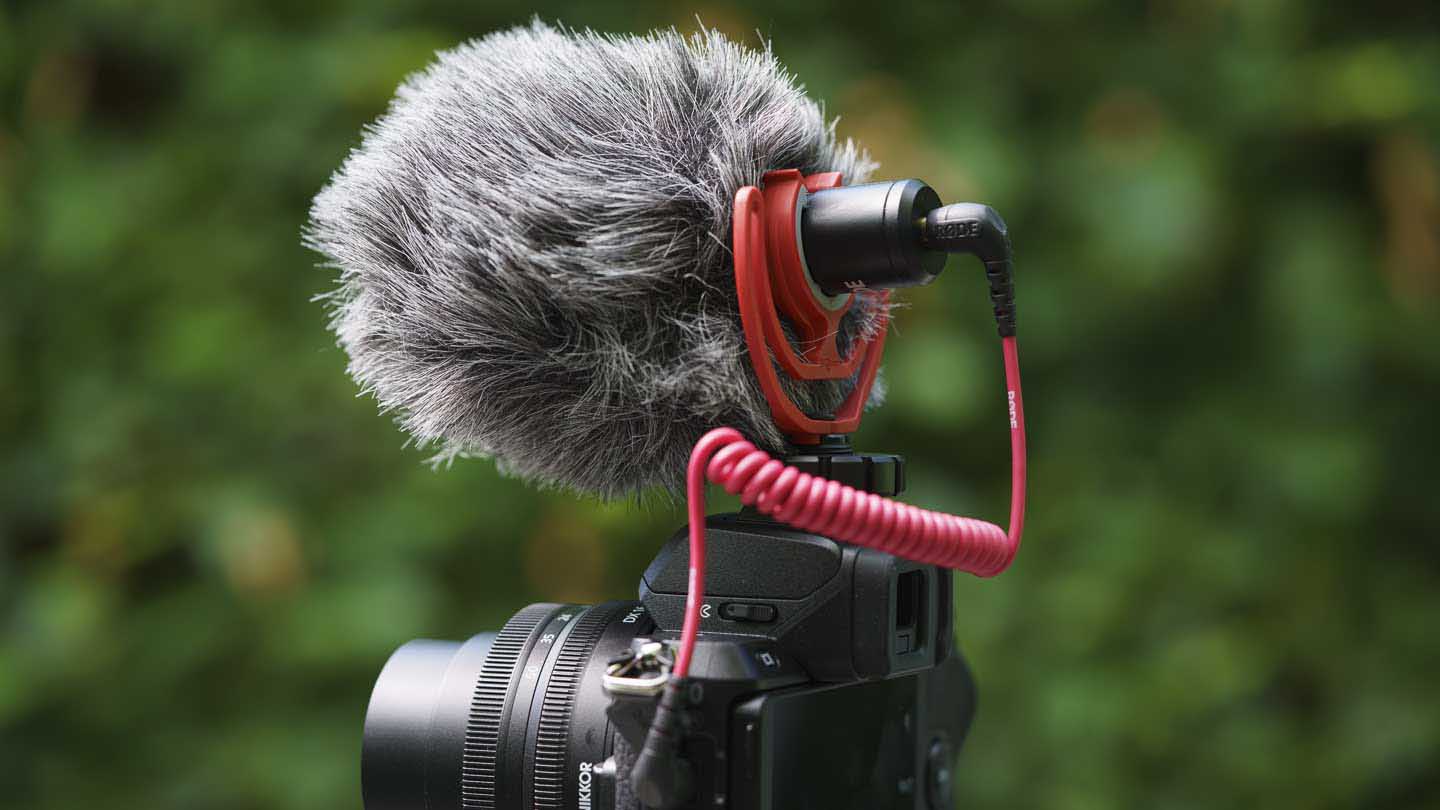Snap Verdict
The Nikon Z6 and Z7 are great, but not all photographers want a full-frame camera. Now there’s an alternative for Nikon users wanting a mirrorless camera, the Nikon Z50. It has plenty to offer experienced photographers, with a solid build and a comprehensive feature set. Thanks to its deep grip and small body, I love the way it feels in my hand. Its autofocus system is also excellent and it can get fast-moving subjects sharp and keep them that way in gloomy conditions. The Nikon Z50 also delivers great images and video, and despite a couple of niggles such as the lack of a joystick and the inability to use the screen to set the AF point while you look in the viewfinder, it’s become one of my favourite cameras of recent times.
Nikon may have been slow to embrace mirrorless technology, but it doesn’t feel like its cameras are playing catch up. There are also some very nice full-frame (FX) format Z lenses, but we need more APS-C (DX) format lenses.
Specifications
- Camera type: APS-C / DX (23.5×15.7mm) format mirrorless camera
- Sensor: 20.88Mp
- Processing engine: Expeed 6
- Lens mount: Nikon Z mount
- Sensitivity range: ISO 100-51,200; expands to 204,800
- Viewfinder: 0.39-inch 2,360,000-dot OLED electronic viewfinder
- Screen: Tilting 3.2–inch 1,040,000-dot touchscreen
- Autofocus: Hybrid (phase and contrast detection) AF with 209 AF points, Eye AF and Subject Tracking
- Continuous Shooting: 11fps with continuous AF and exposure metering
- Video: 4K at 30fps and Full-HD at 120fps
- Storage: SD/SDHC/SDXC UHS-I
- Connectivity: Snapbridge 2.6; Wi-Fi, Bluetooth
- Dimensions (W x H x D): 126.5 x 93.5 x 60 mm / 5 x 3.7 x 2.4-inches
- Weight: 450g / 15.9oz with battery and memory card but without body cap, 395g /14oz body only
You can order the Nikon Z50 at retailers such as Adorama and B&H Photo Video in the US, or from Wex Photo Video and Park Cameras in the UK.
What is the Nikon Z50?
Nikon is referring to the new Z50 as the mirrorless equivalent of the D7500. That means it’s aimed at enthusiast photographers. Of course, it could also appeal to people buying their first interchangeable lens camera.
As well as the usual body-only, single-lens and twin-lens kits, Nikon offers the Z50 in a Vlogger Kit. This includes the Z50 with the 16-50mm kit lens along with the SmallRig Vlogging Mounting Plate for Nikon Z50 Camera (LCN2525) Rode VideoMicro microphone and the Manfrotto Pixi mini tripod.
As it has an APS-C format sensor, or DX-format as Nikon calls it, the Z50 is a little smaller and more affordable than the full-frame Nikon Z6 and Z7. This will help give appeal to people who don’t count photography as their hobby, but who want a decent camera to photograph their main pastime.
However, the majority of Nikon Z50 buyers are likely to be existing Nikon DSLR owners who have a collection of F-mount lenses. They are able to use their current optics on the Z50 via the Nikon FTZ adaptor. I tested the Nikon Z7 and Z6 with adaptor and I found the focusing just as fast as when I used a native lens, while the image quality was every bit as good as I’d expect. I can see no reason why the same will not be true with the Z50
Nikon Z50 Price & Release Date
The Nikon Z50 price tag starts at £849/$857 for the body only, but there are also a number of kits available featuring Nikon’s new lenses.
The Nikon Z50 price tag rises to £989/$997 with the Nikkor Z DX 16-50mm f/3.5-6.3 VR lens kit. A Nikon Z 50 + Nikkor Z DX 50–250mm f/4.5–6.3 VR & Nikkor Z DX 16-50mm f/3.5-6.3 VR lens kit is priced £1,199/$1,197.
A Nikon Z 50 + FTZ mount adapter kit is priced at £989. Alternatively the Nikon Z50 price for the camera body + Nikkor Z DX 16-50mm f/3.5-6.3 VR + FTZ mount adapter kit is £1,129.
The Vlogger Kit, which includes the Z50 and Nikkor Z DX 16-50mm f/3.5-6.3 VR lens along with the SmallRig Vlogging Mounting Plate for Nikon Z50 Camera LCN2525, Rode VideoMicro microphone and Manfrotto Pixi mini tripod retails for £1,049.
You can order the Nikon Z50 at retailers such as Adorama and B&H Photo Video in the US, or from Wex Photo Video and Park Cameras in the UK.
The Nikon Z50 release date was 7 November 2019.
Features
Inside the Nikon Z50 is a new 20.88Mp APS-C format sensor which is paired with the Expeed 6 processing engine. Together, these enable a native sensitivity range for stills of ISO 100-51,200 with expansion settings going all the way up to ISO 204,800. Meanwhile, the video range is ISO 100-25,600.
The fact that Nikon has kept the pixel count to 20-million rather than pushing to 24Mp or higher, should be good news for noise control. As well as benefiting image quality, this should also ensure good autofocus performance. Consequently, I’m anticipating that the Z50 will be a good all-rounder that’s capable of being used in gloomy conditions as well as bright daylight.
Thanks to the Expeed 6 processing engine, the Z50 can shoot at up to 11 frames per second with continuous autofocusing and exposure metering. This rate is achieved in Continuous High Plus mode while the maximum rate in Continuous High mode is 5fps.
There’s also a silent mode that uses the electronic shutter.
Unlike the Z6 and Z7, the Nikon Z50 has an SD card slot for image and video storage. The Z6 and Z7 each have a single XQD card slot.
Autofocus System
In a first for a Nikon DX (APS-C) format camera, the Z50 has phase detection pixels embedded in it. This Hybrid AF system has 209 points that cover 90% of the vertical and horizontal space.
Further good news is that the Z50 has both Subject Tracking and Eye AF modes. Eye AF is a must-have feature at the moment and it’s incredibly useful for portraits and social event photography.
Subject Tracking works in Auto-area AF mode and it’s useful for subjects that move erratically. Pressing the OK button in Auto-area AF mode activates a tracking point which is visible on the screen and in the viewfinder.
You then position this box over the subject and press the OK button again to start the tracking. As the subject moves, the Z50 tracks it around the frame, keeping it sharp in Continuous AF mode.
Read: Nikon Z6 and Z7 Autofocus System Explained
Video
We expect a camera to be able to shoot 4K video now, and the Nikon Z50 can do so at 30fps. As usual, there’s a range of frame rates available for Full-HD video recording. The maximum value is 120fps, which is ideal for slowing down very fast action.
There’s a mic input to enable better quality sound to be recorded via an external mic. In an effort to keep down the size, Nikon hasn’t included a headphone port.
It’s also possible to create Time-lapse videos in-camera.
Lens Mount
Although it has an APS-C format sensor, Nikon has given the Z50 the same lens mount as the full-frame Z6 and Z7.
The Z mount has a diameter of 55mm, that’s a big step-up from the 47mm of the F mount. Nikon made that move to lift some of the restrictions that the old mount imposed on lens design.
It also means that instead of being limited to maximum apertures of f/1.4 or f/1.2 at the very most, the Z-mount enables lenses with maximum apertures as big as f/0.95. We’ll soon be able to see how this shapes up in the form of the new Noct 58mm f/0.95.
While the diameter of the Z-mount is larger than the F-mount’s, the flange depth has reduced to 16mm. It’s that and the omission of the mirror that enables the Z-series cameras to be smaller than their DSLR counterparts.
Having the same mount as Nikon’s full-frame mirrorless cameras means that the lenses are interchangeable. So as well as being able to use Nikon F-mount lenses via the FTZ adapter, you can use native lenses such as the Nikkor Z 14-30mm f/4 S, Nikkor Z 24-70mm f/4 S, Nikkor Z 35mm f/1.8 S, Nikkor Z 50mm f/1.8 S and Nikkor Z 24-70mm f/2.8 S.
Conversely, it’s also possible to mount APS-C (DX) format lenses like the new Nikkor Z 16-50mm VR and Nikkor Z 50-200mm VR lenses on full-frame Z cameras like the Z6 and Z7. However, when they’re mounted, the cameras crops to the DX/APS-C format.
The Z50 doesn’t have in-body stabilisation but the two new DX-format optics both feature Nikon’s VR technology to extend the hand-holdable shutter speed. With the 16-50mm there’s up to 4.5EV compensation while with the 50-250mm lens its to 5 stops.
Nikon Z Lens / S-Line Lens Roadmap
Nikon’s latest roadmap shows one more S-Line DX lens to come in the near future. This is a travel-zoom optic with a focal length of 18-140mm. That’s equivalent to a 27-210mm lens on a full-frame camera.
There are a further 13 FX lenses in the pipeline.
The 16-50mm and 50-250mm lenses are equivalent to 24-75mm and 75-375mm respectively.
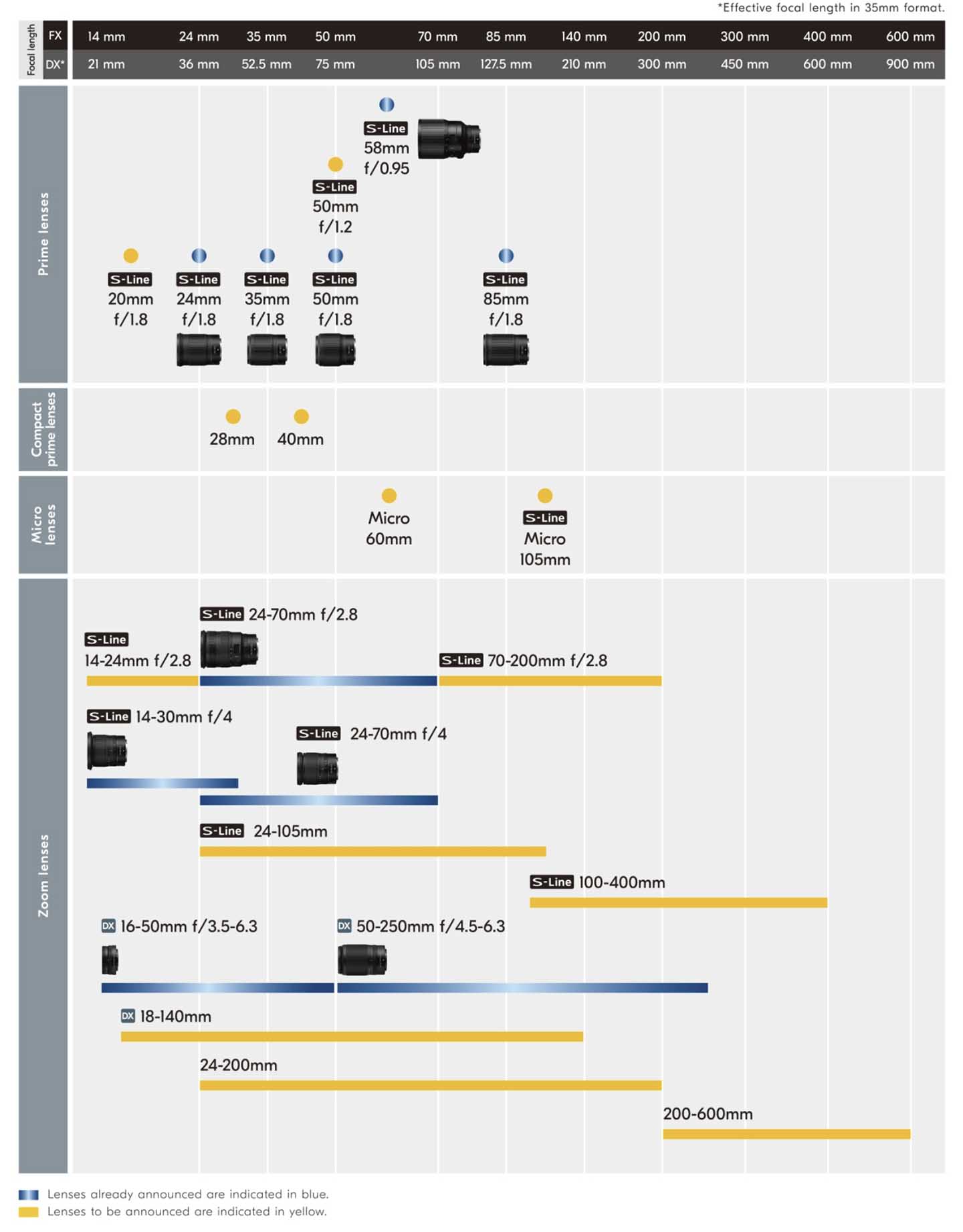
Extras
In addition to the hotshoe, the Z50 has a pop-up flash built-in. The camera is also compatible with Nikon’s WR wireless flash system via radio-control.
Wi-Fi and Bluetooth connectivity is built-in along with Nikon’s latest SnapsBridge system, SnapBridge 2.6. This enables the Z50 to be controlled remotely via a connected smartphone or tablet running Nikon’s free SnapBridge app.
SnapBridge can also automatically transfer images to a paired phone or tablet. This functionality has had a chequered history. I found it worked brilliantly with the Nikon D500 when it was first introduced, but there were issues with subsequent cameras and as operating system updates were made to compatible smartphones.
I’m happy to say that I’ve found there’s a return to form in the Z50. Once they were paired the Z50 and my iPhone chatted away happily. Even when they’d been apart for a while, they often reconnected and with the auto-transfer feature enabled, low-resolution versions of the images I shot on the camera were pinged to my phone very quickly. When there was the odd breakdown in communication, just needed to start the Snapbridge app on my phone and both parties seemed to get the idea and reconnect.
Also, the Z50 is compatible with Nikon’s ML-L7 Wireless Remote Control.
Battery
According to CIPA testing, the Z50’s EN-EL25 battery has a 300-shot life. In normal use, it’s likely to be a bit longer than that, I got over 400 images and several minutes of video clips during one shoot and the level only dropped to two-thirds. However, a second battery could be a wise investment.
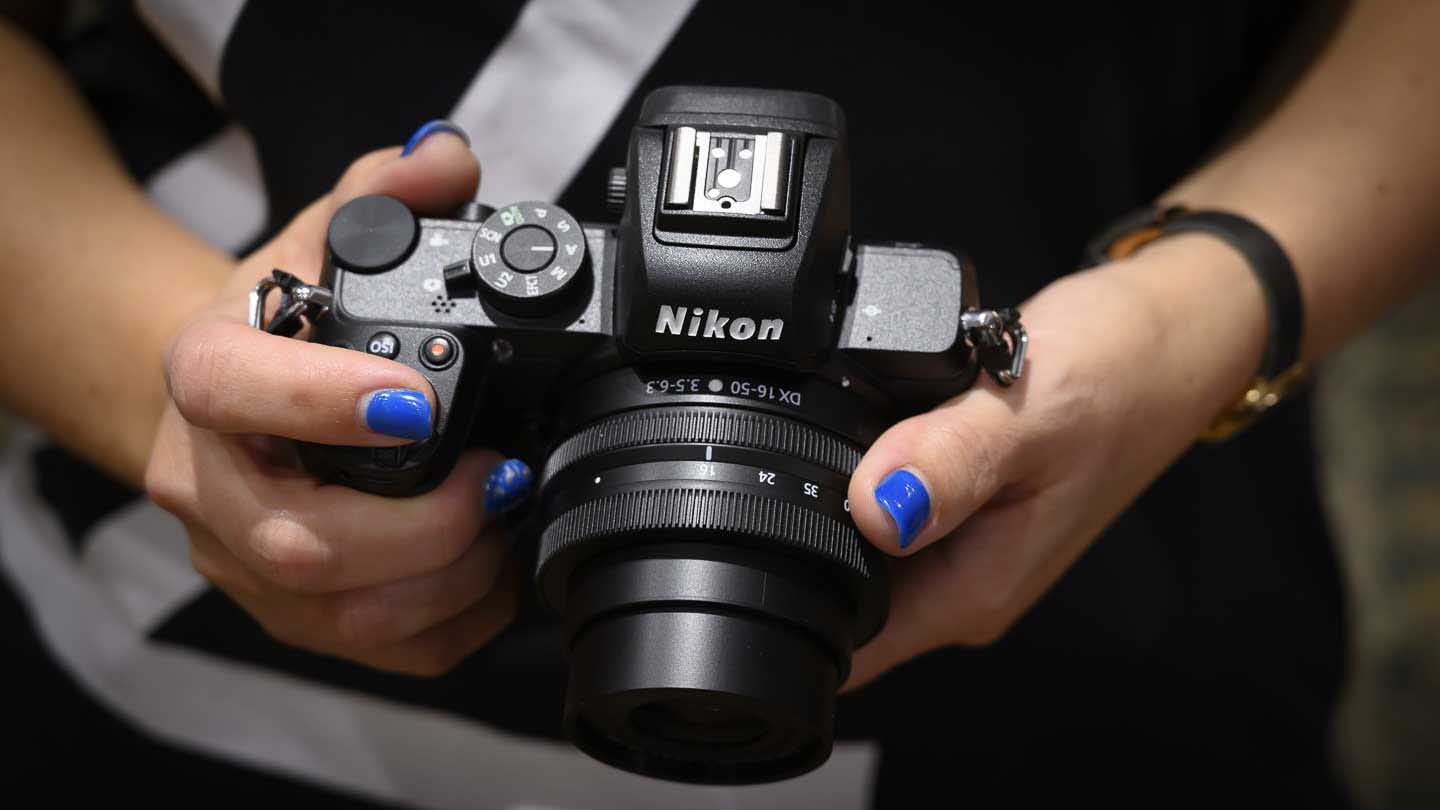
Build and Handling
Although the Nikon Z50 is smaller than the Z6 and Z7, it looks very similar. And while there are advantages to a small camera, Nikon hasn’t gone all-out in the pursuit of downsizing. Consequently, I think the average Nikon DX-format DSLR users will be happy with the feel of the Z50, it’s not a fiddly little camera and there’s a good-sized grip.
The Z50 feels fairly solid. Its front and top plates are made from metal and it’s weatherproof to the same standard as the D7500. I tested that weatherproofing during a downpour at a rugby match and the camera and 50-250mm survived.
As with the Z6 and Z7, existing Nikon DSLR users will find they are on familiar ground with the Z50. The interface is instantly recognisable as Nikon’s.
Tilting Screen
Although it’s a relatively small camera, Nikon has given the Z50 a 3.2-inch touchscreen. This has 1,040,000 dots and is mounted on a tilting bracket.
This bracket enables the screen to be tilted up or down for viewing from above or below. It can tilt down through 180-degrees for viewing from in front of the camera so shoot selfies or for vlogging. The problem with a screen that tilts down is that the view is blocked if the camera is mounted on a tripod.
According to Jeremy Gilbert, Marketing Director Nikon Northern Europe, the tilting mechanism was selected over a vary-angle screen for its greater robustness and reliability.
While I get the point that a tilting hinge is more robust and more affordable than a vari-angle screen, plus adding a vari-angle screen would make the camera, bigger, it’s natural to support the camera from underneath when you’re shooting a hand-held selfie. This blocks a bit of the screen.
I tried vlogging with the camera held in my left hand so I could use the grip and see the screen, and it was okay. But as a right-hander, using my left hand feels wrong. Thankfully, SmallRig has a solution in the form of the Vlogging Mounting Plate for Nikon Z50 Camera LCN2525, which retails for $28.90 by itself and is included in Nikon’s Z50 Vlogger Kit. More on this later.
Touch-control
When the screen is flipped down, the physical button control is reduced to minimise accidental setting changes and the touchscreen comes to the fore.
The Z50’s screen is very responsive to touch and you can use it to make setting selections and adjustments via the main or Info menu.
One thing you can’t currently do, however, in use the screen to set the AF point while you look in the viewfinder. That’s disappointing as there’s no joystick control either. Nikon UK’s representative indicated that there may be a firmware update to give the screen this functionality.
As it stands, the AF point is shifted via the navigation pad while you look in the viewfinder. If you’re using the screen, you can just set the point with a tap of your finger.
Interestingly, the Z50’s screen has a column of icons etched on to its right side. These are active touch-sensitive buttons that give access to useful features such as the magnification control, help and display options.
Viewfinder
As the Z50 is a mirrorless camera, it has an electronic viewfinder (EVF). Nikon has plumped for a 2.36-million-dot unit. That’s lower resolution than the 3.6million-dot EVF’s in the Z6 and Z7 but there’s less area to cover, so the density is likely to be similar.
The Z50’s EVF also has the same elements as the Z6 and Z7’s, which is good news from a clarity point of the view. And I haven’t noticed the chromatic aberration that the Z6 and Z7 EVFs are prone to
Browsing through the images I’ve captured on the Z50 during my testing confirms that the viewfinder gives a good preview of the scene. In the default settings, its contrast and saturation can be a little on the high side, but it’s not excessive and the exposure is a good match.
Controls
The top-plate of the Z50 is fairly clean with just a mode dial, command dial and the power switch around the shutter release. Just beneath this, there’s a sub-command dial for making setting adjustments.
The front of the camera also has two customisable function buttons near the lens mount. They’re within convenient reach of your fingers around the grip.
I customised the control arrangement so I can adjust exposure compensation using the manual focus ring on the lens. This reverts back to its normal duty if you switch to manual focusing mode, but I find that very rarely necessary with the Z50. I love how this allows me to adjust the exposure so easily while I’m looking in the viewfinder.
Nikon Z50 Vlogger Kit
When SmallRig unveiled the Vlogging Mounting Plate for Nikon Z50 Camera LCN2525, it solved the problem of not being able to see the screen from in front of the camera when the Z50 is on a tripod. This plate screws onto the bottom of the camera and has a lip or ridge along its front that’s shaped to fit around the Z50, holding it in place and preventing it from twisting around.
Just in front of the screw to mount the SmallRig plate onto the Z50, there’s a threaded hole that can accept a tripod quick release plate screw, so you can mount the camera more-or-less as normal on a tripod. However, the clever part is that there’s a series of threaded holes on the right side of the plate, underneath the Z50’s grip. These allow you to mount the camera on a tripod without obscuring the screen.
Nikon includes the SmallRig Vlogging Mounting Plate for Nikon Z50 Camera LCN2525 in a Vlogger Kit with the Z50 and 16-50mm lens. As I mentioned earlier, the kit also includes a Rode VideoMicro microphone and Manfrotto Pixi mini tripod.

The Manfrotto Pixi can screw into any of the tripod bushes in the SmallRig plate. I found that if you want to flip the Z50’s screen down to view it from in front of the camera, you need to use one of the middle or outer threaded holes under the camera’s grip. You also need to position the legs of the tripod carefully to ensure the camera stays upright.
When the Manfrotto Pixi’s legs are closed, it makes an ergonomically-shaped handle beneath the camera, leaving the screen clear to see.
Helpfully, the Rode VideoMicro microphone comes with both a shock-mount and a windshield. The shock mount slips neatly into the camera’s hotshoe while the supplied cable connects the mic to the Z50’s 3.5mm mic port.
Using the Rode VideoMicro microphone significantly improves the audio recorded on the Z50, while the windshield helps to keep wind noise down. I kept the mic pointing forwards throughout the video below, and as you’ll hear, the sound is best when the mic is pointing at the main subject. When I was talking behind the camera, the background noise becomes more noticeable.
While the SmallRig Vlogging Mounting Plate fixes securely onto the Z50 and solves the problem of not being able to see the screen from the front when the camera is on a tripod, it brings a couple of issues of its own. The first is that you have to remove the plate in order to change the battery or the SD card. That’s not a massive issue, but something to note.
SmallRig makes this a little less inconvenient than it might otherwise be by including a small round screwdriver on the plate. This is held on the plate by magnets, so it’s easy to find and use when you need it.
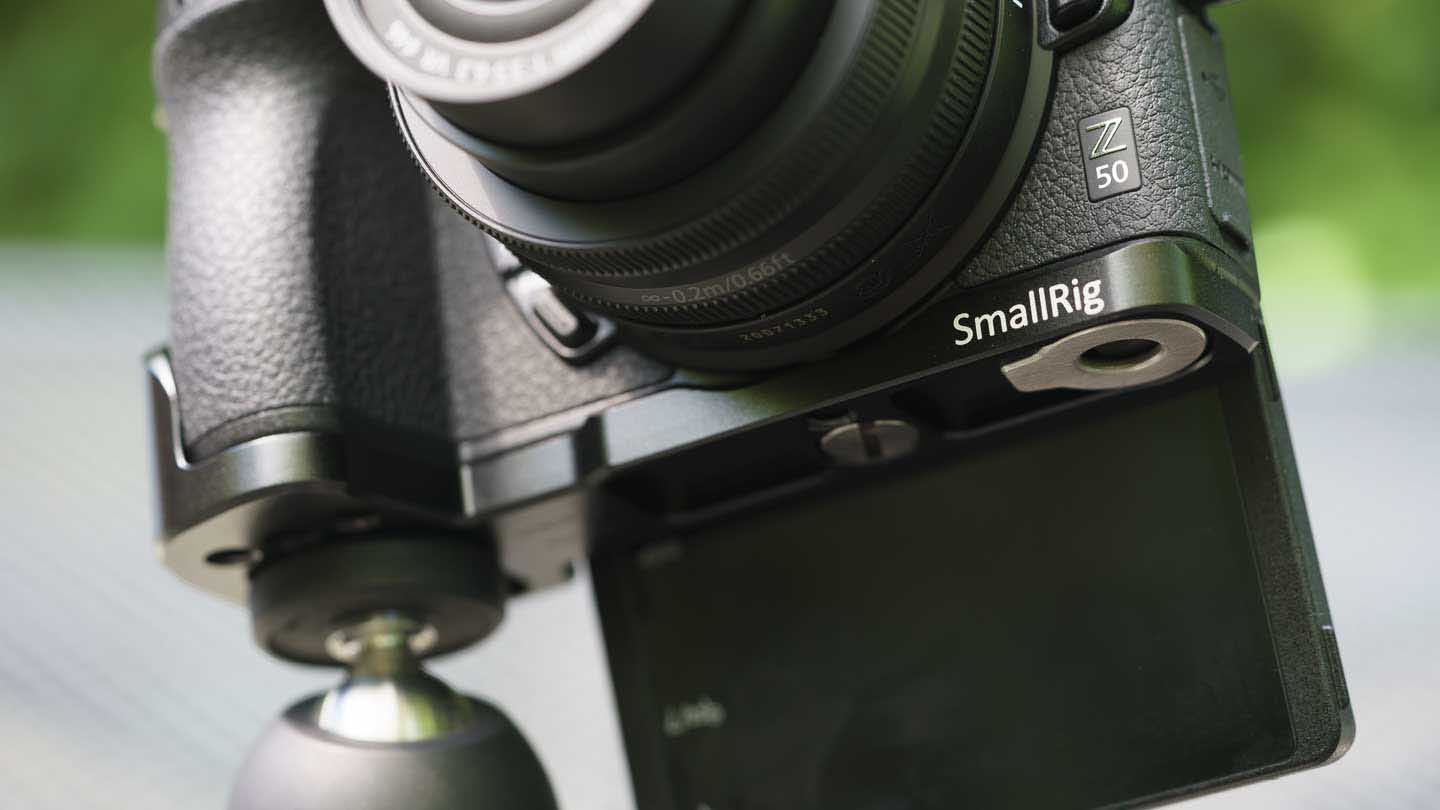
The other problem is that the SmallRig plate covers a small section of the top of the Z50’s screen when it’s flipped down for viewing from in front of the camera. This is where the red ‘record’ indicator is, so if you’re shooting with the camera in front of you, you can’t actually be sure that it’s recording. The solution is either to trust that you’ve pressed the record button correctly or to set the camera recording while you have the screen tilted back a little so you can see the indicator and then flip the screen down and carry on shooting.
Ideally, Nikon needs to issue a firmware update that moves the location of the record indicator (or gives this as an option). Alternatively, the camera could put a red box around the frame when it’s recording to make it even more obvious.
Despite these issues, the Nikon Z50 Vlogger Kit is a great package.
Performance
The image quality from Nikon’s recent DSLRs and the Z6 and Z7 has impressed us and the Z50 does not disappoint.
Of course, as the imaging sensor is used to assess white balance and exposure with the Z50, and there’s an electronic viewfinder that can show the image as it will be captured, there should be no excuses for dodgy exposures. But the Z50’s Matrix metering system still impresses with its ability to cope with large bright areas in the background.
You can’t leave the camera completely to its own devices when it comes to the exposure, but it does a very good job. Sometimes it pays to reduce the exposure by 0.3Ev to boost the colour saturation a little.
Image Colour
On the colour front, the Z50 also performs well. I tend to favour the Neutral and Standard Picture Control settings. The others, including the Creative options are handy on occasion. With a little contrast boost, the Monochrome mode can produce nice results.
There are four auto white balance settings. The first, ‘Natural light auto’ is good in the conditions it’s intended for. It delivers natural-looking images. There’s also ‘Keep white (reduce warm colors), ‘Keep overall atmosphere’ and ‘Keep warm lighting colors’. Keep white is very handy and effective in artificial light, but it can be useful in the shade as well.
It’s well worth experimenting with the various options to see which produces the result you like. And of course, you can preview their impact in the viewfinder or on the screen before you even take a shot.
Image Quality
I find the Z50 maintains detail levels well up to about ISO 6400 or ISo 12,800. You can see some coloured speckling if you look at ISO 12,800 images at 100%, but it’s not bad. You may even get acceptable shots at higher values, but there’s some loss of detail and smoothing visible here and there in Jpegs and raw files. With that in mind, I’d aim to make ISO 12,800 the maximum value but try to stay under ISO 6,400 when possible.
In addition, the quality of the 4K video is excellent.
Dynamic Range
When you’re shooting it’s clear that the Z50 can capture a wide range of tones. It doesn’t lose the highlights or block up the shadows too readily. And if you need to brighten your raw files when you’re processing your images, you’ll find that they are pretty elastic. In some cases, you can brighten shadows by 4Ev or more without noise becoming excessively visible or the colour being badly desaturated.
Autofocus Performance
The Z50 is the first Nikon DX-format camera to have on-chip phase detection pixels and its autofocus (AF) system is very good indeed. I shot a rugby match on very overcast December afternoon, complete with torrential rain for part of it, and it did a great job of getting the subject sharp and keep it so.
I was shooting with the new Nikkor Z DX 50-250mm f/4.5-6.3 VR lens. That means for much of the time I was shooting at f/6.3. That’s hardly ideal for the low-light conditions, but it did a brilliant job.
In continuous AF mode, I was able to get sharp images in each of the AF point selection modes, Single-point AF, Dynamic-area AF, Wide-area AF (Small), Wide-area AF (Large) and Auto-area AF. However, I found Wide-area AF (Small) and Wide-area AF (Large) gave me the best results. They make it far easier to keep the active area over a moving subject than Single-point AF. They also allow you to target the focusing more than Auto-area AF, so it doesn’t switch to a different player while you’re shooting.
Subject Tracking
I also tried using the Subject Tracking option with the rugby, but it got distracted by lots of players milling around the scene. However, I was very impressed by how well it performed when I photographed my dog. I photographed him in a forest and despite the dim conditions, and the fact that he’s brown so he blends in well with all the fallen leaves, it kept him in focus as he raced around.
Also, when the Z50’s Face Detection system is activated, it spots faces very quickly. If it identifies more than one face, it puts a box around the face it’s going to prioritise with an arrow indicating the navigation key that’s required to jump to another face. It’s super-easy to use.
In addition, the Eye AF system is pretty snappy to spot an eye in the frame.
Shooting Action
As I mentioned earlier, the Z50 can shoot at 11fps in High-speed continuous (extended) also know as High-speed continuous plus mode. That’s great for capturing fast action, and the camera can focus sontinusally in that mode.
However, there’s some blackout visible in the viewfinder and screen. I still found I was able to keep up with rugby players as they ran around the pitch, but dropping to High-speed continuous mode and shooting at 5fps makes them easier to follow in the viewfinder.
Sample Images
Follow the link to browse and download full-resolution sample images from the Nikon Z50.
[FAG id=89389]
You can order the Nikon Z50 at retailers such as Adorama and B&H Photo Video in the US, or from Wex Photo Video and Park Cameras in the UK.
Sample Video
This video was shot using the Nikon Z50 in 4K 30p with the Flat Picture Control. It’s direct from the camera with no grading. The audio was recorded using the internal mic and there’s some wind noise.
This short vlog was shot using the Z50 in 4K at 30p with the internal mic.
This video was shot in 4K at 30p using the Nikon Z50 mounted on a Movo MTP-20 Programmable Tripod Head as it makes 360-degree rotations. The Z50’s inbuilt mic was used for the first rotation and the Movo VXR10 Universal Cardioid Mic was used (with its windshield) for the second
Verdict
I love how the Z50 feels in my hand and it makes a tidy little unit with the 16-50mm pancake lens. Stash the 50-250mm f/4.5-6.3 lens in a bag, and you’ve got a really versatile kit. It felt strange to be able to travel so light to photograph a rugby match. I’d normally want to take a faster lens to shoot sport but the 50-250mm is nice and light, plus the results I got are great.
The grip is excellent and after shooting in heavy rain for 20 minutes or so, I can confirm that the camera is weatherproof.
I’m slightly disappointed by the lack of a joystick and the inability to use the screen to set the AF point while you look in the viewfinder. I’d also prefer a vari-angle screen. However, the additional control and change to the screen would add bulk and cost to the camera. Maybe these features will come to a camera between the Z50 and Z6?
Overall, however, I think that Nikon has done a good job of gauging what its customers want from a camera. I’m sure there will be a few who are wishing that the Z50 had a 24Mp sensor rather than a 20Mp chip, but I think they won’t be disappointed by the image quality.
At present, there are only two DX format Z lenses and there’s another listed on the lens roadmap. While existing Nikon users can mount their DSLR optics via the FTZ adapter, there needs to be more directly compatible lens.
On a final note, I love Nikon’s Snapbridge system in the Z50. It means you can shoot with a dedicated camera and have the images on your phone in an instant. It’s amazing how often that’s useful these days.
